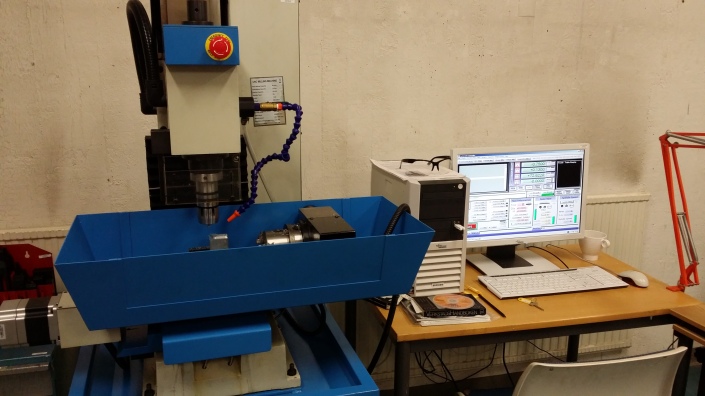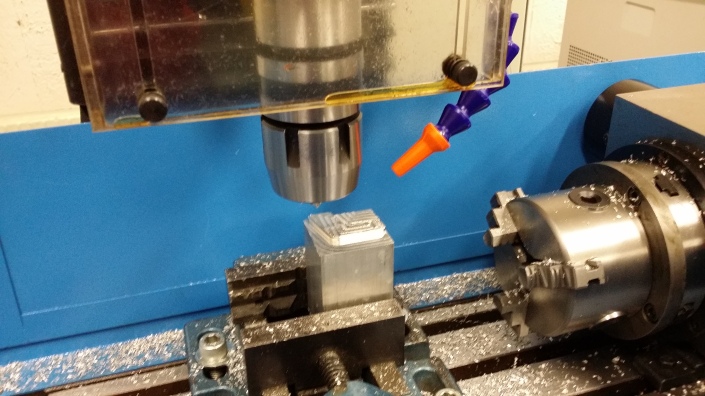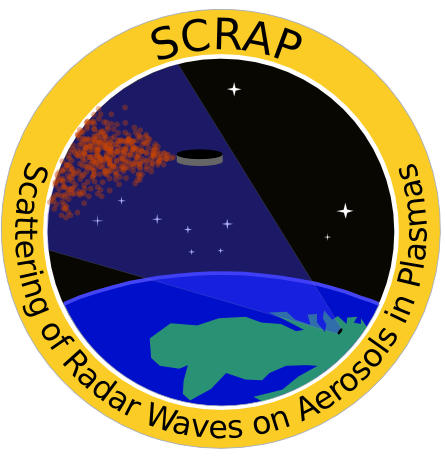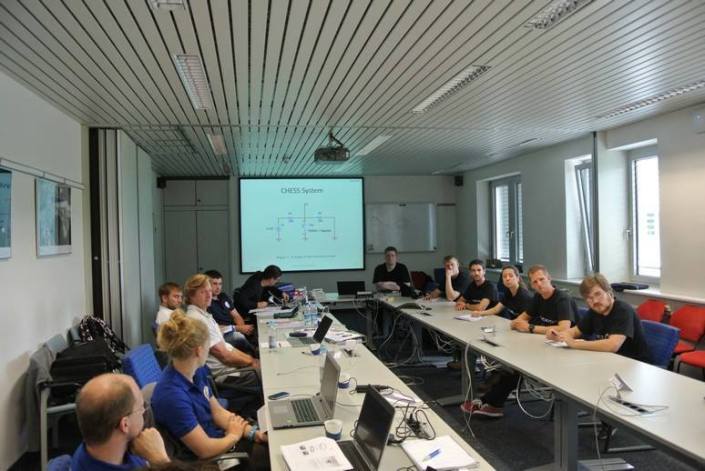Month: July 2014
Working hard
Dear followers,
these are intense days for SCRAP team. The revision of the SED after the CDR has been finished last sunday, and now part of the team which is in Stockholm is keeping on manifacturing cartridges, while the rest, spread all over the world, is working at different tasks.
A nice picture of the new cartridges is shown below.

Some members are working on the electronic devices and schematics, while others are making some calculations in order to have an estimation of generated forces depending on quantity of gun cotton.
The last, but not the least, the mechanical shape of the ejection control sensor is in a development process. As you can see, hard work is the keyword of these days!
Keep calm and continue to follow us!
\SCRAP Team
What’s your favourite atmospheric layer?
Scientists love to classify. While biologists get all excited about their felis silvestris catus and particle physicists can’t stop talking about that charmonium hybrid state, geophysicists quench their thirst for classification by slicing the atmosphere into layers.
What etymology tells you
The atmospheric layers are mostly defined by their physical properties and how they differ from their neighbours. Their names were chosen in an attempt to represent these characteristics. For example, troposphere – the lowest region, up to roughly 15 km in altitude, where weather happens – literally means “sphere of changes”, because turbulence plays an important role there. Next, we have the stratosphere and its stratified structure (roughly 15 to 50 km), the hot thermosphere (roughly 90 to 600 km) and the far-off exosphere (above 600 km) where the density is so low that molecules follow ballistic trajectories without colliding with each other.
Since “the more the merrier”, you can subdivide the main layers or define new layers which overlap. Cue the ionosphere in its ionized state, the D, E and F regions which absorb different radiation wavelengths, the homosphere, the heterosphere, the anacoustic zone… All named after their physical properties.
Mysterious mesosphere
The exception to the rule is the mesosphere, the layer of interest for the SCRAP experiment. Approximately located between 50 and 90 km in altitude, it is too high to be reached by aircrafts and too low for spacecrafts, meaning we have to rely on sounding rockets or indirect observations to learn about it. Because of that, the mesosphere is by far the most poorly understood layer of the atmosphere, to the point that its name basically means “that stuff in between” and that some have started dubbing it “the ignorosphere”.
Hopefully, the SCRAP experiment will contribute to unravel the mysteries of the mesosphere and to expose the expose the mechanisms behind polar mesospheric summer echoes.

The world cup has come to an end
The clock is just about to strike one am. The streets of Munich are blossoming with activity. The trains are crowded with people chanting “Wir sind Weltmeister” and “Deutschland”.
Not to far from DLR in Oberpfaffenhofen, where our CDR was held not to long ago, an entire city just exploded. The world cup has come to an end and with Germany as the victor. But as they say, the show must go on and the SCRAP team is currently hard at work updating the SED for the deadline next Sunday. But we still have time to congratulate our German friends and colleagues on their newly acquired title.
Congratulations, you truly are the champions.
/The SCRAP team.
Critical Design Review in Oberpfaffenhofen
Monday the 23rd of June: Hannah, Rasmus, Alexander, Matteo, Simon and Hannes reunited in Munich for the CDR at Deutsches Zentrum für Luft- ind Raumfahrt. It was quite a mission bringing the SCRAP members together but Hannah organised it with the REXUS Programme and the SCRAP members and finally Hannah was joining from Hamburg, Alexander from Munich, Hannes from Paris, Simon from Lisbon and Rasmus and Matteo from Stockholm. Luckily the team consists of 15 people and usually around 10 home at KTH so work can continuously progress and tasks that doesn’t require lab work or CAD NX are often allocated to the people away.
At Tuesday the 24th of June SCRAP Joined the RX18 Interface discussion after receiving an email from the REXUS programme where it was written that SCRAP was going on the RX18 rocket, turned out to have been a typo and the team was two hours early. But hey never hurts to be early… except the stress in the morning and running along autobahn..
We then had Lunch at DLR shortly followed by lectures on Environmental Testing, REXUS Campaign, “Ask an Expert” session where we got to ask all of our questions and discuss some concerns with different experts from ESA, DLR, SNSB and SSC. Then we had our own Interface discussion where we discuss the hazard and possible interferences with other experiments going on the same rocket. This is of course very critical to think about as a lot could go wrong otherwise. We need to make sure we do not cause any danger to other experiments or to the success of their research.
Then it was time for the British team WUSAT to have their CDR so SCRAP joined the other teams in the auditorium where we lived streamed the Italy-Urugay world cup game… even though it was not a successful game for Italy the italian team PHOS kept their spirits up!
Afterwards a bus came to pick us all up to drive us around the beautiful countryside and off to an extremely authentic bavarian restaurant, and when i say bavarian I MEAN LEDERHOSEN! We had a lovely night and it was great seeing each other and the other teams again!
The day after we had our own CDR! We presented the progress of our experiment and had a 2 hour session with the panel where hot topics were the recovery of the free falling units after launch. This is a HUGE topic regarding safety that we will ensure, with several locks to be safe to retrieve that being with mechanical pin lock and pressure sensors and possibly electronic solutions as well are being looked into. More about this to come in its own blog post! 🙂 There was also critic on the current status of the electronic progress being to far back and the SCRAP team have had high focus on the physical, optical, cloud dynamics and mainly mechanical development and will now steer the focus more into electronics and manufacturing. A couple of members will however of course still carry on the cloud dynamics research.
After the CDR the team had a last lunch together and then parted from Munich at different times and days back to: Hamburg, Stockholm, Kiruna, Milano and Alexander staying in Munich.
Things not to do with guncotton: Make billiard balls
Using guncotton for rocket experiments is fun and all, but what if you want to do something a bit more practical with it?
In late 19th century, the billiards industry realized that its use of ivory for manufacturing the balls needed to be changed to something more sustainable. One solution to this problem was found by the american engineer John Weasly Hyatt, who with his recently invented material camphored nitrocellulose was able to create satisfactory billiard balls.

Watch out…
The only problem? As all followers of the SCRAP blog know, nitrocellulose is another name for the flammable/explosive material guncotton, used by us to explode microparticles from the rocket.
So what happened when someone got a really god hard hit with the ball? Parts of it would explode! You think that someone would have seen this comming…
Later, the ‘recipe’ was improved, giving us the non-flammable billiard balls of today. Thanks for that!
The SCRAP team’s little helper
The SCRAP experiment sure has a lot of nice looking parts and fancy mechanics, but they’re not really gonna manufacture them selves now are they. Of course we have access to a fully equipped workshop full with lathes, mills, grinders, cutters etc., i.e. the kind of tools your grandpa used to build his rocket experiments.
However, in the 21st century a bit more sophisticated equipment is expected, and that is why we got this. I call him Steve 🙂 (disclaimer: name not yet official).

He’s a 200 kg heavy KX3 4-axis CNC milling machine with a 1kW total power, 5000 rmp max spindle speed and a 0.01 mm precision.
The computer is some old piece of junk we found laying around in the lab.

Hopefully Steve will bring us many happy memories and a severe reduction in manufacturing headaches (after the huge headache of the setup has finally settled that is).
/The SCRAP team







